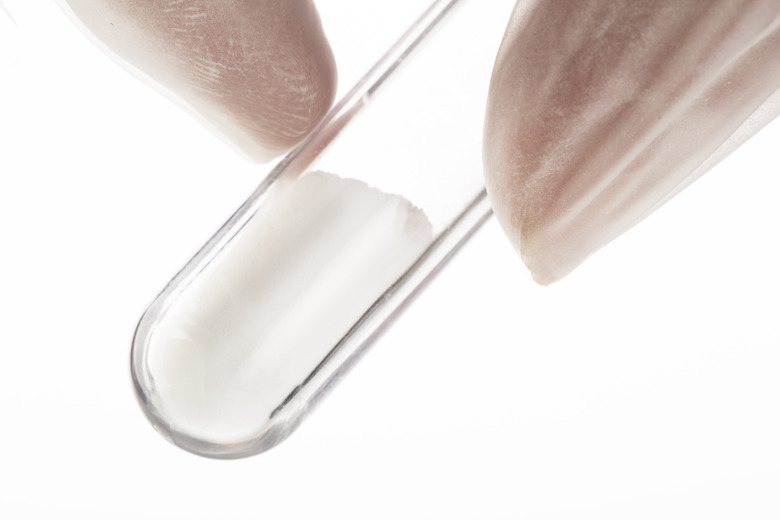Chemical Properties Of Benzoic Acid
Benzoic acid is a solid, white crystalline substance that is chemically classified as an aromatic carboxylic acid. Its molecular formula may be written as C7H6O2. Its chemical properties are based on the fact that each molecule consists of an acidic carboxyl group attached to an aromatic ring structure. The carboxyl group can undergo reactions to form products such as salts, esters, and acid halides. The aromatic ring can undergo reactions such as sulfonation, nitration and halogenation.
Molecular Structure
Molecular Structure
Among aromatic carboxylic acids, benzoic acid has the simplest molecular structure, in which a single carboxyl group (COOH) is directly attached to a carbon atom of a benzene ring. The benzene molecule (molecular formula C6H6) is made up of an aromatic ring of six carbon atoms, with a hydrogen atom attached to each carbon atom. In the benzoic acid molecule, the COOH group replaces one of the H atoms on the aromatic ring. To indicate this structure, the molecular formula of benzoic acid (C7H6O2) is often written as C6H5COOH.
The chemical properties of benzoic acid are based on this molecular structure. In particular, the reactions of benzoic acid can involve modifications of the carboxyl group or the aromatic ring.
Salt Formation
Salt Formation
The acidic portion of benzoic acid is the carboxyl group, and it reacts with a base to form a salt. For example, it reacts with sodium hydroxide (NaOH) to produce sodium benzoate, an ionic compound (C6H5COO- Na+). Both benzoic acid and sodium benzoate are used as food preservatives.
Production of Esters
Production of Esters
Benzoic acid reacts with alcohols to produce esters. For example, with ethyl alcohol (C2H5OH), benzoic acid forms ethyl benzoate, an ester (C6H5CO-O-C2H5). Some esters of benzoic acid are plasticizers.
Production of an Acid Halide
Production of an Acid Halide
With phosphorus pentachloride (PCl5) or thionyl chloride (SOCl2), benzoic acid reacts to form benzoyl chloride (C6H5COCl), which is classified as an acid (or acyl) halide. Benzoyl chloride is highly reactive and is used to form other products. For example, it reacts with ammonia (NH3) or an amine (such as methylamine, CH3-NH2) to form an amide (benzamide, C6H5CONH2).
Sulfonation
Sulfonation
Reaction of benzoic acid with fuming sulfuric acid (H2SO4) leads to sulfonation of the aromatic ring, in which the functional group SO3H replaces a hydrogen atom on the aromatic ring. The product is mostly meta-sulfobenzoic acid (SO3H-C6H4-COOH). The prefix "meta" indicates that the functional group is attached to the third carbon atom relative to the point of attachment of the carboxyl group.
Nitration Products
Nitration Products
Benzoic acid reacts with concentrated nitric acid (HNO3), in the presence of sulfuric acid as catalyst, leading to nitration of the ring. The initial product is mostly meta-nitrobenzoic acid (NO2-C6H4-COOH), in which the functional group NO2 is attached to the ring at the meta position relative to the carboxyl group.
Halogenation Products
Halogenation Products
In the presence of a catalyst such as ferric chloride (FeCl3), benzoic acid reacts with a halogen such as chlorine (Cl2) to form a halogenated molecule such as meta-chlorobenzoic acid (Cl-C6H4-COOH). In this case, a chlorine atom is attached to the ring at the meta position relative to the carboxyl group.
References
Cite This Article
MLA
Dadachanji, Dinshaw. "Chemical Properties Of Benzoic Acid" sciencing.com, https://www.sciencing.com/chemical-properties-benzoic-acid-2721/. 18 May 2018.
APA
Dadachanji, Dinshaw. (2018, May 18). Chemical Properties Of Benzoic Acid. sciencing.com. Retrieved from https://www.sciencing.com/chemical-properties-benzoic-acid-2721/
Chicago
Dadachanji, Dinshaw. Chemical Properties Of Benzoic Acid last modified August 30, 2022. https://www.sciencing.com/chemical-properties-benzoic-acid-2721/
